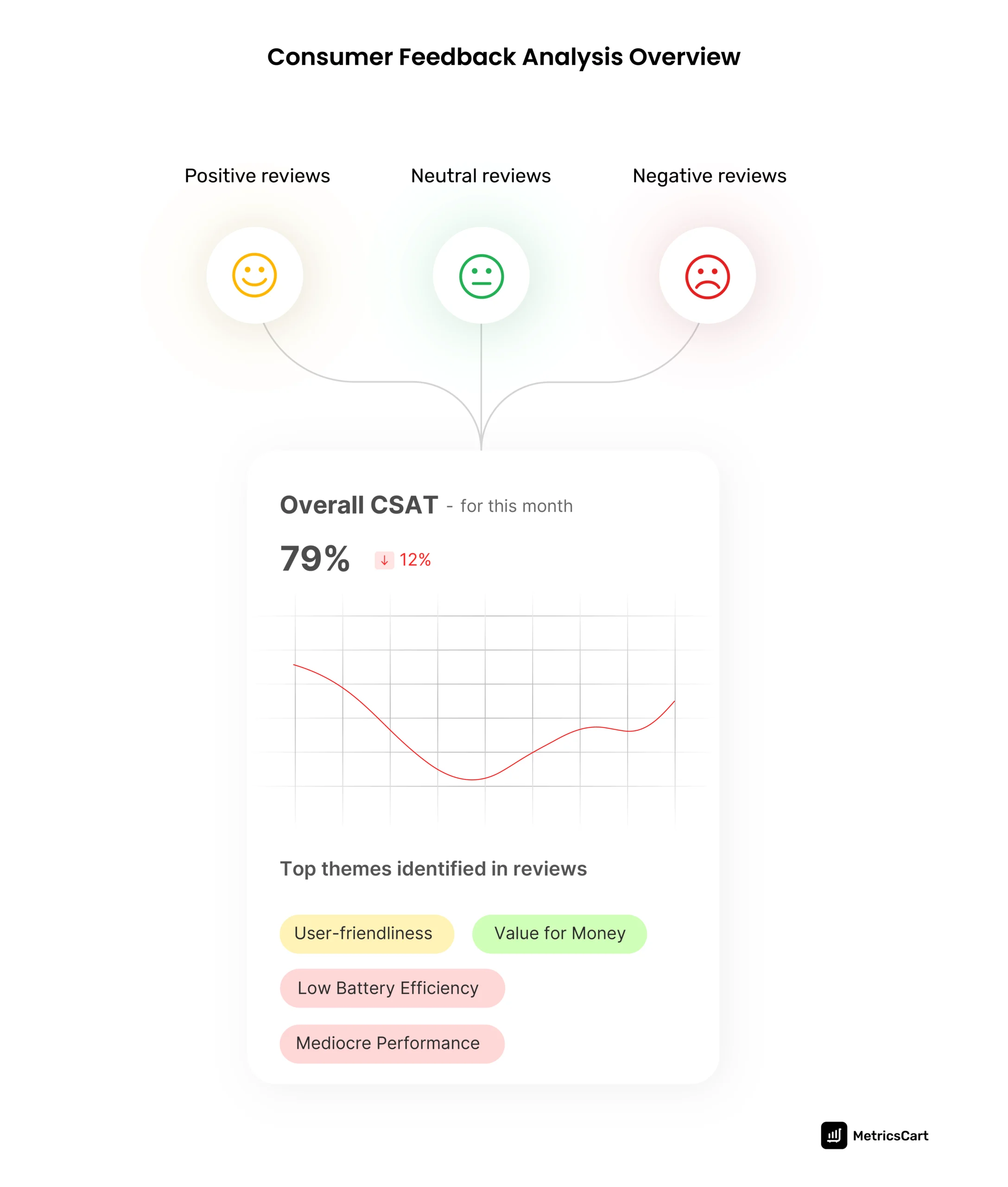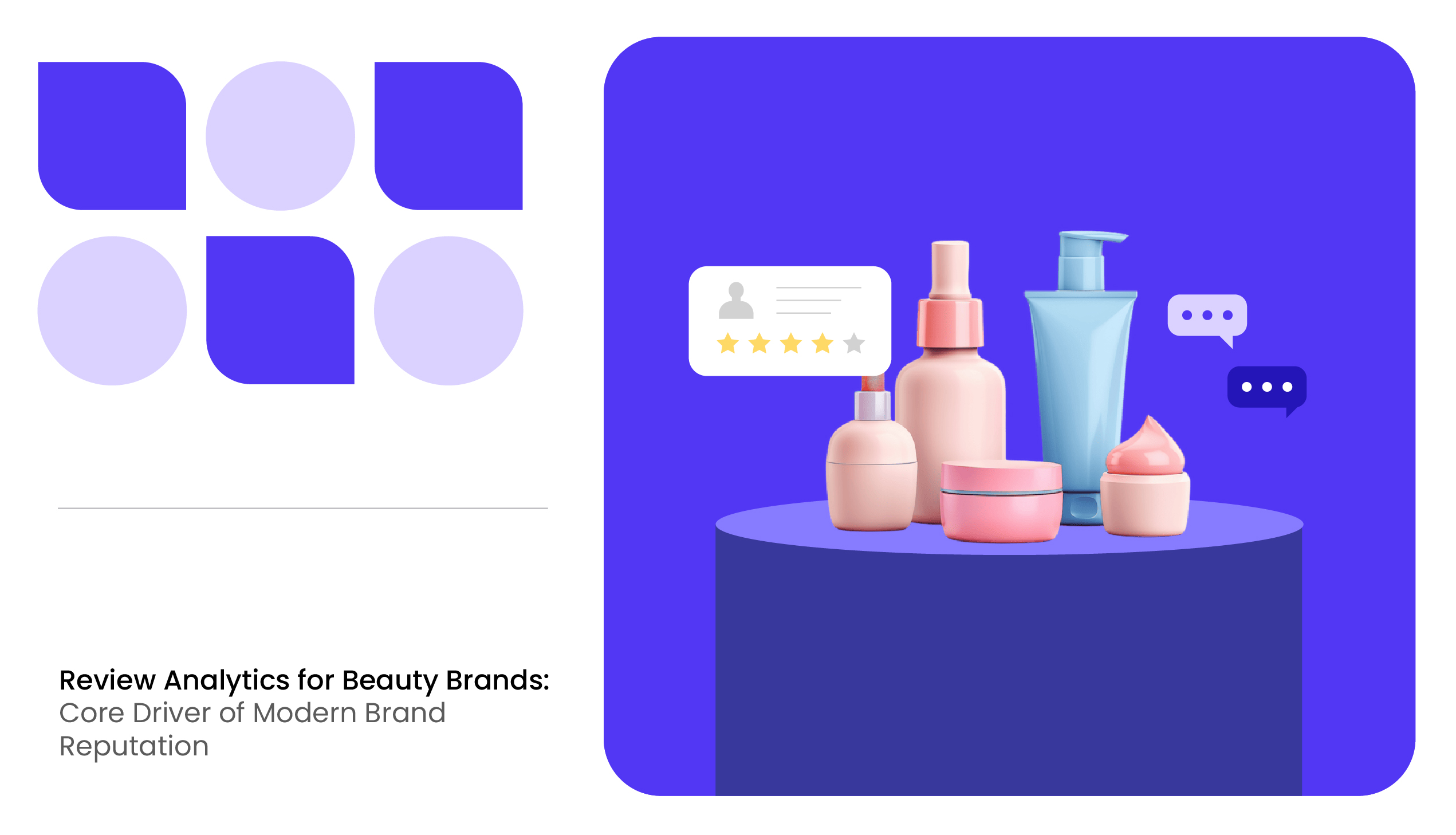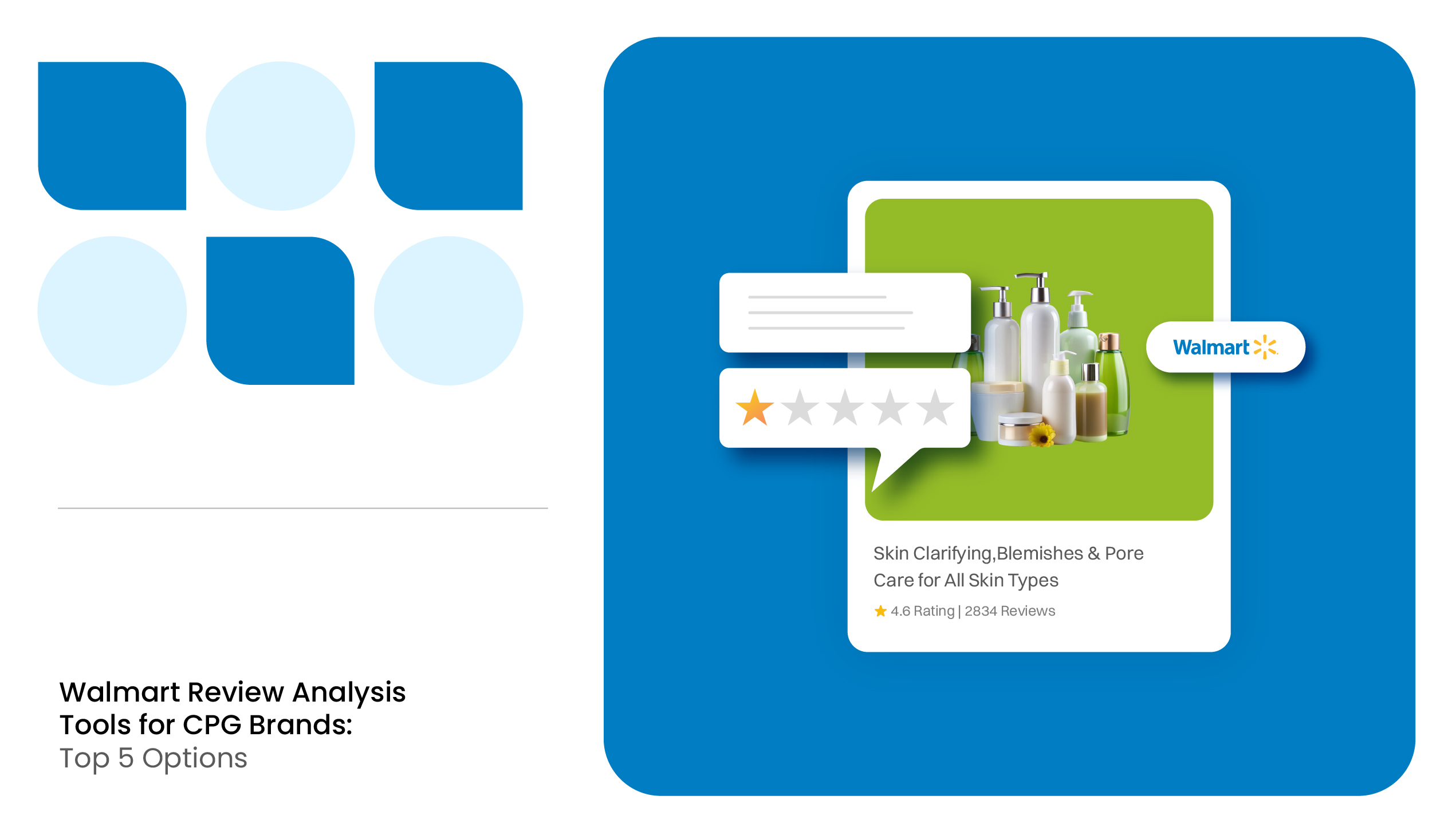According to a Zendesk survey, three in four consumers would prefer to stay with a business that provides a good customer experience (CX). After the COVID-19 pandemic, brands and online retailers realized the power of CX through omnichannel integration.
Customer feedback analysis has been gaining prominence in the online business world. It has become a major part of influencing buying decisions and increasing e-commerce sales.
Third-party review monitoring solutions are a great way to monitor and analyze consumer feedback methods. They can process large amounts of data to create actionable insights. These strategies can create efficient brand reputation management for online businesses.
What Is Customer Feedback Analysis?
Customer feedback analysis in e-commerce is the process of collecting, organizing, and analyzing different types of customer feedback, such as reviews, support data, product feedback, social media comments, etc.

It is highly dependable on the source and volume of the data to be analyzed. This analysis helps brands and e-commerce businesses better understand consumers’ needs and problems.
Importance of Customer Feedback Analysis
Understanding the importance of customer review analysis is essential for any e-commerce brand. It allows businesses to:
Enhance Customer Satisfaction
By addressing customers’ concerns and preferences, brands can improve their products and services, leading to higher customer satisfaction.
Drive Product Innovation
Feedback provides direct insights into what customers like or dislike, helping brands innovate and develop products that better meet market demands.
Improve Customer Retention
Brands that actively listen and respond to customer feedback are more likely to retain their customers, fostering loyalty and repeat business.
Increase Sales and Revenue
Positive feedback can attract new customers, while addressing negative feedback can prevent potential sales losses, ultimately boosting overall revenue.
All these aspects are crucial for any e-commerce business aiming to scale and create market dominance. Monitoring ratings and reviews with the help of a third-party service gives brands an extra edge in product development and consumer experience.
The main benefits include:
- Automated monitoring of omnichannel integrations
- Better feedback organization compared to manual monitoring
- Improving customer experience within the whole product cycle
READ MORE | Take a look at the benefits of monitoring ratings and reviews in e-commerce. Explore our article Product Rating and Review Monitoring on the Digital Shelf
Types of Customer Feedback Analysis
Customer feedback analysis can be broadly categorized into manual and automated methods, each with its own set of techniques.
Manual Analysis
Manual analysis involves human evaluation of feedback, often leading to deeper insights due to the nuanced understanding humans can provide. However, it can also be a very long and tedious process. Especially for brands that have multiple omnichannel customer service integrations, manual analysis can prove cumbersome.
Automated Analysis
Automated analysis leverages technology to quickly and efficiently process large volumes of feedback data. Brands and online businesses can use third-party services like MetricsCart to monitor and analyse customer feedback through multiple channels.
According to the method of analysis, there are two main types of automated customer feedback analysis. They are:
Sentiment Analysis
Sentiment analysis is a technique for determining the emotional tone behind customer feedback. It uses natural language processing (NLP) algorithms to assess the sentiment behind a review or feedback.
Sentiment analysis involves categorizing feedback into positive, negative, or neutral sentiments. For instance, a review stating, “I love the texture of the curtain fabric,” would be classified as positive, while “The fabric quality was so cheap that it tore in less than a week ” would be negative.
These tools can analyze thousands of reviews in minutes, categorizing them by sentiment and providing an overall sentiment score for a product or service.

Thematic Analysis
Thematic analysis identifies recurring themes or patterns in consumer feedback. Like sentiment analysis, automated thematic analysis employs machine learning algorithms to detect themes and trends from consumer reviews, support data, social media comments, etc.
The AI algorithm searches through the data to highlight common issues or praises, such as frequent complaints about battery life or appreciation for customer service. This method provides a comprehensive understanding of major customer concerns and areas of excellence.
Solutions like MetricsCart’s e-commerce product review analysis platform can automatically monitor feedback and group it into themes and sub-themes, providing brands with a high-level view of customer opinions without the need for manual categorization.
Benefits of Customer Feedback Analysis
Customer feedback analysis offers numerous benefits, forming a critical part of the feedback loop that drives continuous improvement.
Seeking Out New Trends and Preferences
By regularly analyzing customer feedback, brands can stay ahead of emerging trends and preferences. This proactive approach allows businesses to adapt their offerings to meet evolving customer expectations, ensuring they remain competitive in the market.
Analyzing the Emotions Behind Consumer Decisions
Understanding the emotions driving consumer decisions helps brands create more personalized and emotionally resonant marketing strategies. Emotional insights can reveal why customers prefer certain products, how they perceive brand value, and what factors influence their purchasing decisions.

Creating an Effective Voice of Customer Program (VoC)
An effective Voice of Customer program is essential for systematically capturing and utilizing customer feedback. Such programs involve:
- Collecting Feedback: Using surveys, reviews, and other tools to gather feedback across various touchpoints.
- Analyzing Data: Employing manual and automated analysis techniques to interpret the feedback.
- Implementing Changes: Acting on the insights gained to improve products, services, and customer experiences.
- Closing the Loop: Communicating back to customers about the changes made based on their feedback, showing that their opinions are valued and impactful.
READ MORE | Getting the right consumer feedback requires consistent product experience. Check out our blog on Product Experience Management: A Brief Walkthrough
Conclusion
Customer feedback analysis is a vital process for e-commerce brands seeking to enhance customer satisfaction, drive innovation, and boost retention and sales. By leveraging both manual and automated analysis techniques, brands can gain deep insights into customer sentiments and preferences, guiding strategic decisions and fostering continuous improvement.
Implementing a robust VoC program further ensures that feedback is systematically collected, analyzed, and acted upon, creating a strong feedback loop that benefits both the brand and its customers.
One of the top lifestyle brands had this to say about MetricsCart rating and review solution:
“The comprehensive analysis provided by MetricsCart has given us valuable insights into our customers’ needs and preferences. We can now quickly identify and address common issues, leading to higher customer satisfaction. The ability to track and analyze reviews across multiple platforms in real-time has streamlined our workflow and allowed us to be more responsive.”
MetricsCart provides cutting-edge review monitoring solutions that automate large amounts of customer feedback data. The thematic analysis moves a step further compared to sentiment analysis categorizing reviews and feedback data into theme and sub-theme-based categories.
Why wait? Contact us for an expert review of your brand and to create customized digital shelf solutions.





